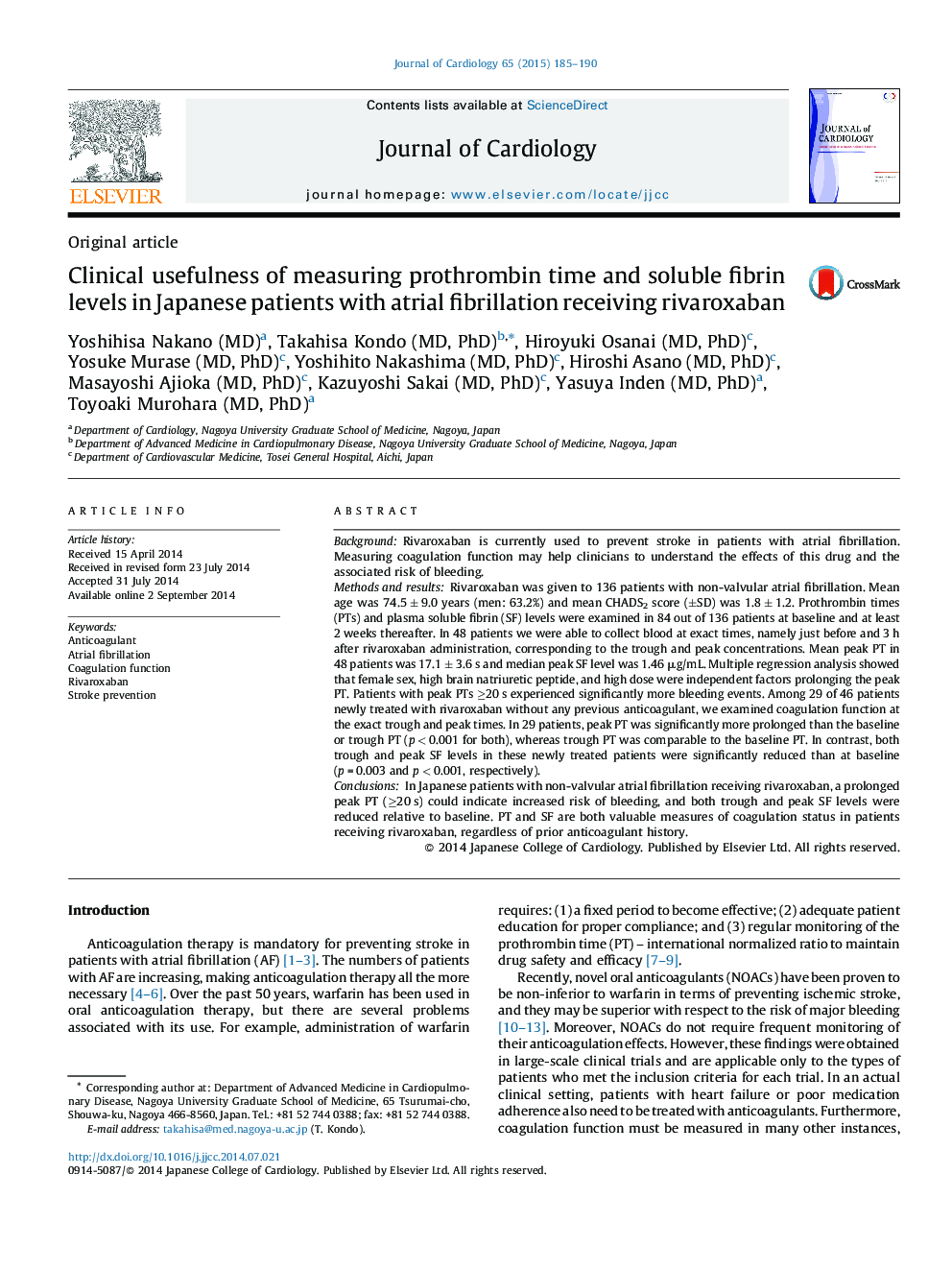| Article ID | Journal | Published Year | Pages | File Type |
|---|---|---|---|---|
| 5983953 | Journal of Cardiology | 2015 | 6 Pages |
BackgroundRivaroxaban is currently used to prevent stroke in patients with atrial fibrillation. Measuring coagulation function may help clinicians to understand the effects of this drug and the associated risk of bleeding.Methods and resultsRivaroxaban was given to 136 patients with non-valvular atrial fibrillation. Mean age was 74.5 ± 9.0 years (men: 63.2%) and mean CHADS2 score (±SD) was 1.8 ± 1.2. Prothrombin times (PTs) and plasma soluble fibrin (SF) levels were examined in 84 out of 136 patients at baseline and at least 2 weeks thereafter. In 48 patients we were able to collect blood at exact times, namely just before and 3 h after rivaroxaban administration, corresponding to the trough and peak concentrations. Mean peak PT in 48 patients was 17.1 ± 3.6 s and median peak SF level was 1.46 μg/mL. Multiple regression analysis showed that female sex, high brain natriuretic peptide, and high dose were independent factors prolonging the peak PT. Patients with peak PTs â¥20 s experienced significantly more bleeding events. Among 29 of 46 patients newly treated with rivaroxaban without any previous anticoagulant, we examined coagulation function at the exact trough and peak times. In 29 patients, peak PT was significantly more prolonged than the baseline or trough PT (p < 0.001 for both), whereas trough PT was comparable to the baseline PT. In contrast, both trough and peak SF levels in these newly treated patients were significantly reduced than at baseline (p = 0.003 and p < 0.001, respectively).ConclusionsIn Japanese patients with non-valvular atrial fibrillation receiving rivaroxaban, a prolonged peak PT (â¥20 s) could indicate increased risk of bleeding, and both trough and peak SF levels were reduced relative to baseline. PT and SF are both valuable measures of coagulation status in patients receiving rivaroxaban, regardless of prior anticoagulant history.
